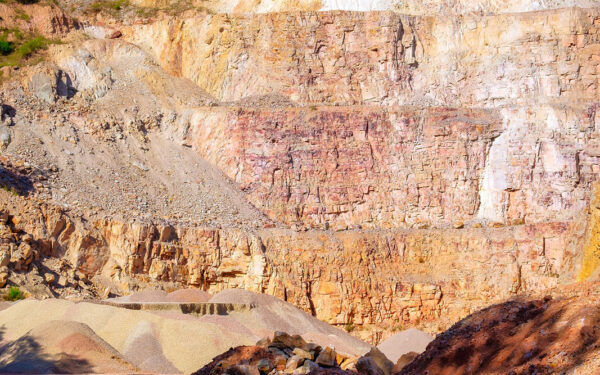Granite is one of the most popular materials for benchtops due to its durability, aesthetic appeal, and versatility. This natural stone, formed over millions of years, offers unique patterns and colours that can enhance any kitchen or bathroom design. This article explores the qualities of granite, its benefits for benchtops, and the modern production process that brings this beautiful stone from the quarry to your home.
The Qualities of Granite
 1. Durability: Granite is highly durable and ideal for high-traffic areas such as kitchen benchtops. It is resistant to scratches, heat, and general wear and tear, ensuring that it maintains its appearance and functionality for many years.
1. Durability: Granite is highly durable and ideal for high-traffic areas such as kitchen benchtops. It is resistant to scratches, heat, and general wear and tear, ensuring that it maintains its appearance and functionality for many years.
2. Aesthetic Appeal: One of granite’s most attractive features is its natural beauty. Each slab has unique patterns, colours, and veining. This variability ensures that no two granite benchtops are the same, offering a bespoke look that can add character and elegance to any space.
3. Heat Resistance: Granite is highly resistant to heat, making it perfect for kitchen benchtops where hot pots and pans are frequently placed. This resistance ensures that the surface remains intact and free from damage even when exposed to high temperatures.
4. Low Maintenance: While granite requires periodic sealing to maintain its resistance to stains and moisture, it is relatively low maintenance compared to other natural stones. Regular cleaning with mild soap and water is usually sufficient to keep it looking pristine.
5. Versatility: Granite is available in various colours and patterns, from subtle whites and greys to bold blues and reds. This versatility makes it easy to find a granite slab that complements the design aesthetic of any kitchen or bathroom.
6. Value Addition: Installing granite benchtops can increase the value of your home. Homebuyers highly value granite’s durability, beauty, and luxurious appeal, making it a worthwhile investment for homeowners looking to enhance their property’s marketability.
Using Granite for Benchtops
1. Kitchens: Granite is popular for kitchen benchtops due to its durability, heat resistance, and aesthetic appeal. It provides a robust surface for meal preparation, is easy to clean, and adds a touch of elegance to the kitchen.
2. Bathrooms: Granite can be used for vanity tops and shower surrounds in bathrooms. Its resistance to moisture and bacteria makes it a hygienic option, while its natural beauty enhances the bathroom’s overall look.
3. Maintenance: To maintain the beauty and durability of granite benchtops, sealing them periodically is essential. This helps prevent stains and moisture from penetrating the surface. Using cutting boards and trivets can also help protect the surface from scratches and heat damage.
The Modern Process of Granite Production
1. Quarrying: The journey of granite from the quarry to the benchtop begins with extracting large blocks of granite from quarries. This process involves drilling, cutting, and sometimes blasting to remove the stone from the earth. Modern technology, such as diamond wire saws and water jet cutting, has made the extraction process more efficient and less wasteful.
2. Block Dressing: Once the granite blocks are extracted, they are transported to processing plants. Here, the blocks are dressed, which involves trimming them into manageable sizes and removing any irregularities or defects.
3. Slab Production: The dressed blocks are then cut into slabs using gang saws or wire saws. These machines use a series of blades or wires to slice the blocks into thin slabs, the thickness of which can vary depending on the intended use.
4. Surface Finishing: After cutting, the slabs undergo surface finishing to enhance their appearance and functionality. This process can include polishing, honing, or flaming. Polishing gives the granite a glossy, reflective surface, while honing produces a matte finish. Flaming creates a textured surface that adds depth and character.
5. Quality Control: Quality control is a crucial step in the production process. Each slab is inspected for defects, such as cracks, chips, or colour inconsistencies. Slabs that meet the quality standards are then graded and sorted based on colour, pattern, and overall appearance.
6. Cutting and Fabrication: Once the slabs are ready, they are cut and fabricated into specific shapes and sizes for benchtops. This involves precise measurements and cutting to ensure a perfect fit. Edge profiling is also done at this stage, where the edges of the benchtops are shaped and finished according to the desired style.
7. Sealing and Finishing: Before the granite benchtops are installed, they are sealed to protect against stains and moisture. This sealing process involves applying a protective layer to the surface, penetrating the stone, and creating a barrier against spills and dirt.
8. Installation: The final step is installation. Professional installers ensure that the benchtops are securely placed and levelled. They also make any necessary adjustments to fit around sinks, stovetops, and other fixtures. Proper installation is crucial to ensure the longevity and stability of the benchtops.
Conclusion
Granite is an excellent choice for benchtops due to its durability, aesthetic appeal, and versatility. Its ability to withstand heat and resist scratches makes it ideal for kitchens, while its natural beauty enhances the look of any bathroom. The modern production process, from quarrying to installation, ensures that each granite benchtop is crafted to the highest quality and durability standards. By understanding the qualities of granite and the steps involved in its production, homeowners can make informed decisions and enjoy the timeless elegance of granite benchtops in their homes.

